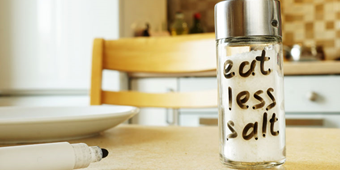Exercise Necessary To Heart-Healthy Lifestyle

Making exercise part of your regular day-to-day routine can reduce your likelihood of developing many issues that increase the risk of heart disease, including high cholesterol, high blood pressure, and diabetes.
Because about 600,000 people die from heart disease in the U.S. annually, it’s important to make lifestyle changes – such as eating a healthy diet and adding more exercise to your daily routine – to combat the disease, according to the American Heart Association (AHA).
Exercise can reduce the potential for plaque build-up in your arteries, aid in weight loss, lower cholesterol, and lower blood pressure.
Aerobic exercise is the best choice for heart health, according to the American Academy of Family Physicians (AAFP). It raises your heart rate and includes activities such as brisk walking, jogging, running, dancing, swimming, and cycling.
However, before changing a current exercise routine or starting a new one, make sure to talk to your doctor.
You can measure your exercise intensity by monitoring your target heart range, which is generally recommended to be 60 to 85 percent of your maximum heart rate, according to the AHA. Discuss your appropriate range with your physician.
You can also use the “Talk Test” to gauge your workout intensity. For moderate intensity aerobic exercise, you should be able to speak in full sentences without gasping between words. If you are gasping, your workout is too intense, but if you can sing, it is too light.
A good goal is to exercise about 150 minutes (2.5 hours) each week, according to the AAFP. That works out to 30-minute workouts five times a week.
A good way to fit in exercise when you have a busy schedule is to raise your heart rate with some activities that are already part of your day:
- Bike or walk to work
- Choose the stairs instead of the elevator
- Do more yard work, such as raking leaves and push-mowing the lawn
- Park at the farthest point in parking lots
- Take a walk during a break or lunch at work
- Up your housework by moving at a quicker pace, switching from room to room often, or adding tasks, such as vacuuming every day
- Walk more briskly than usual
Source: American Heart Association, American Academy of Family Physicians




